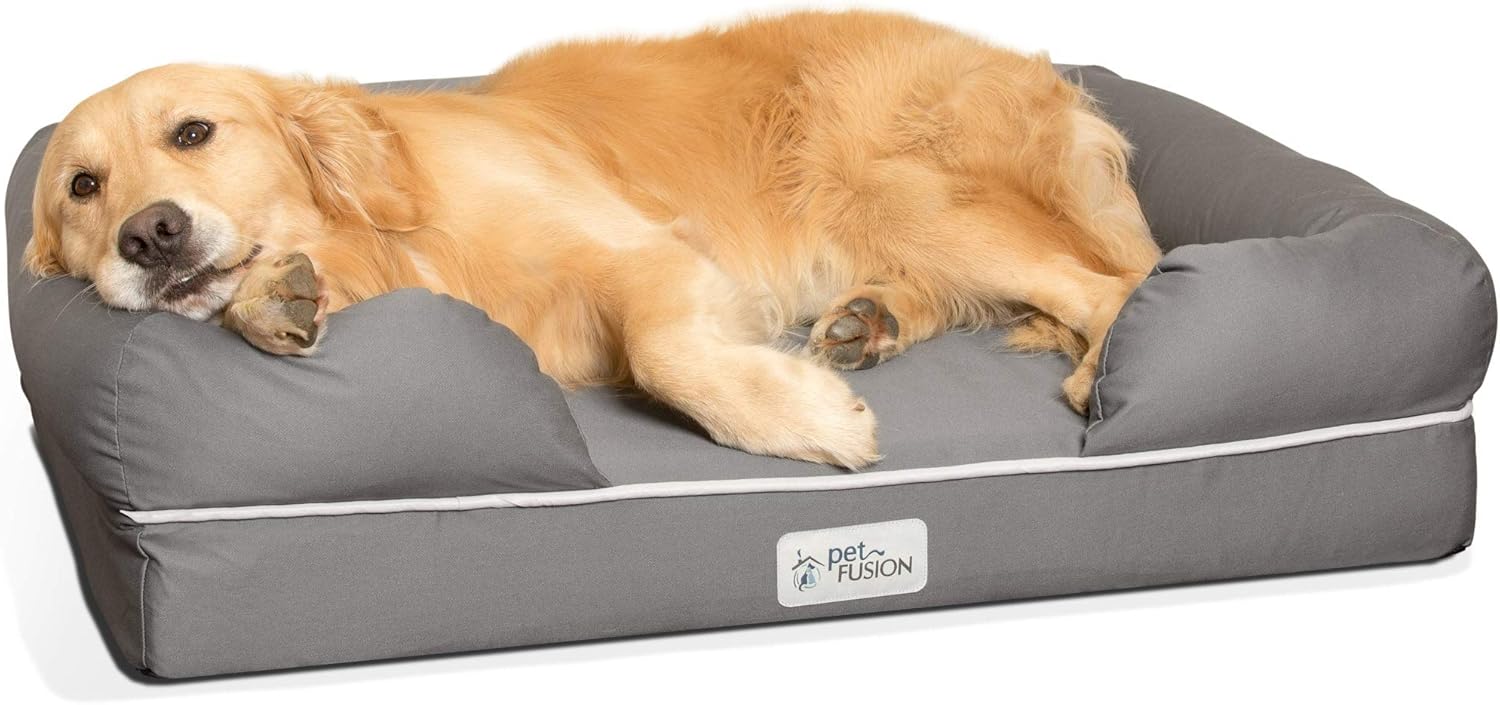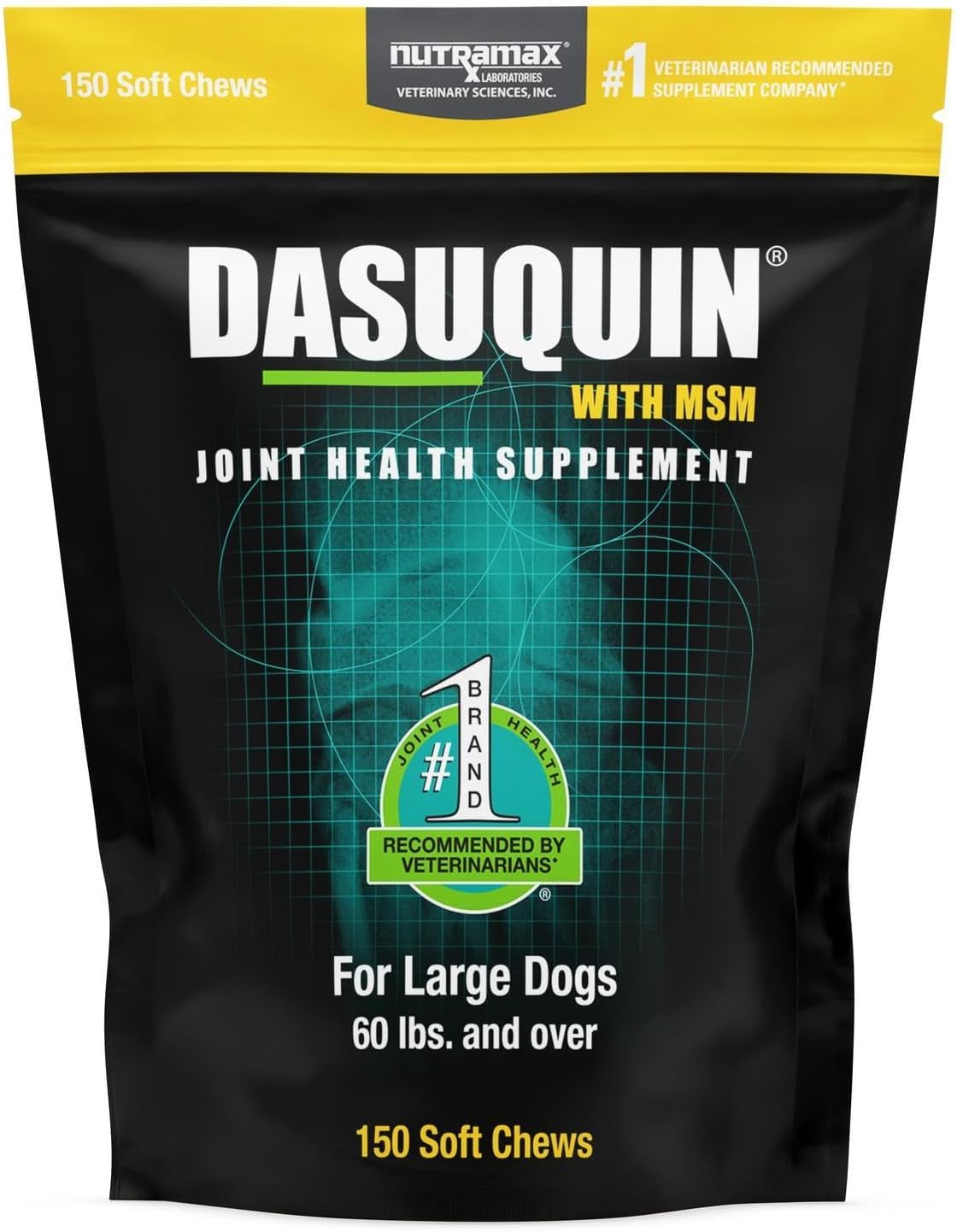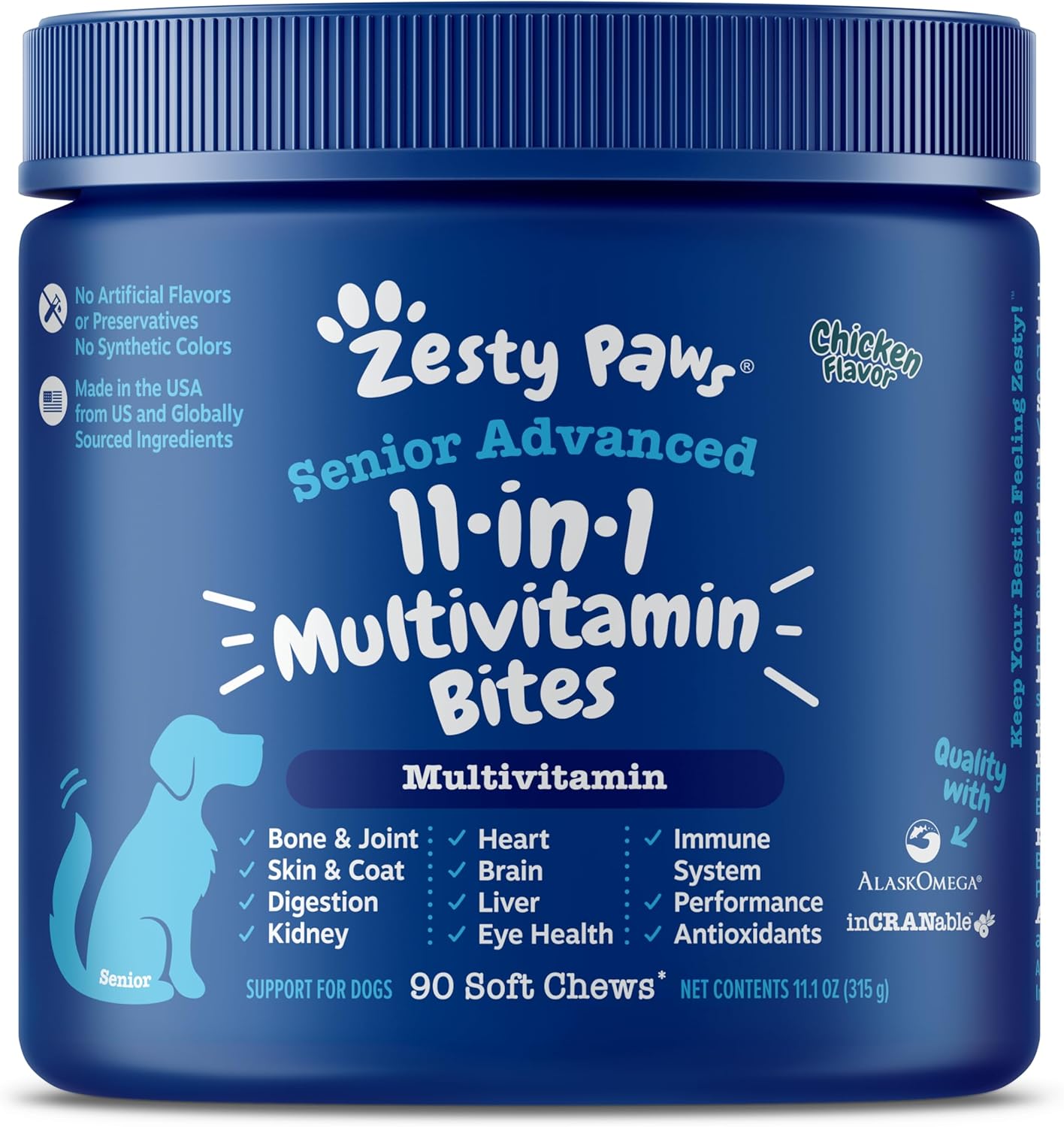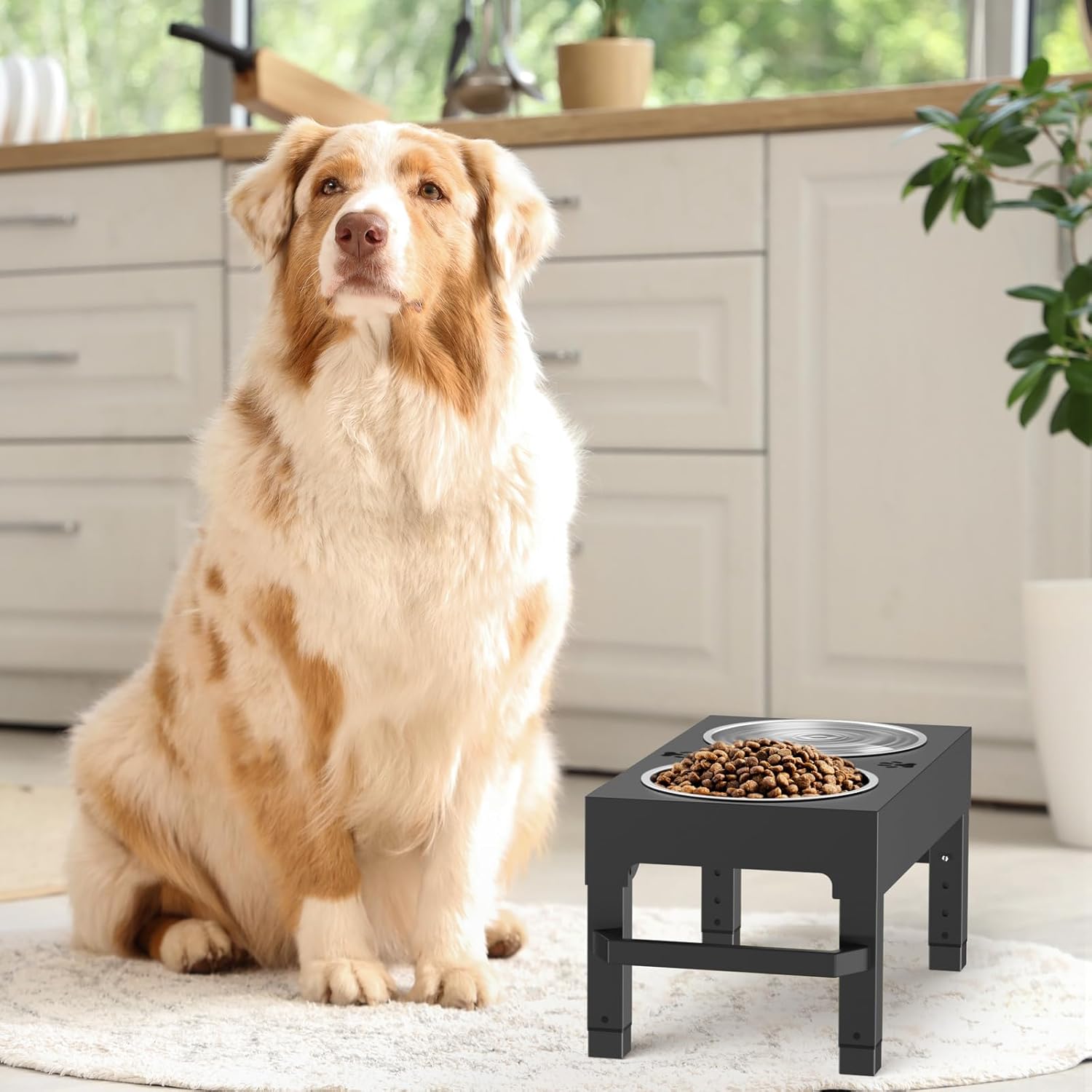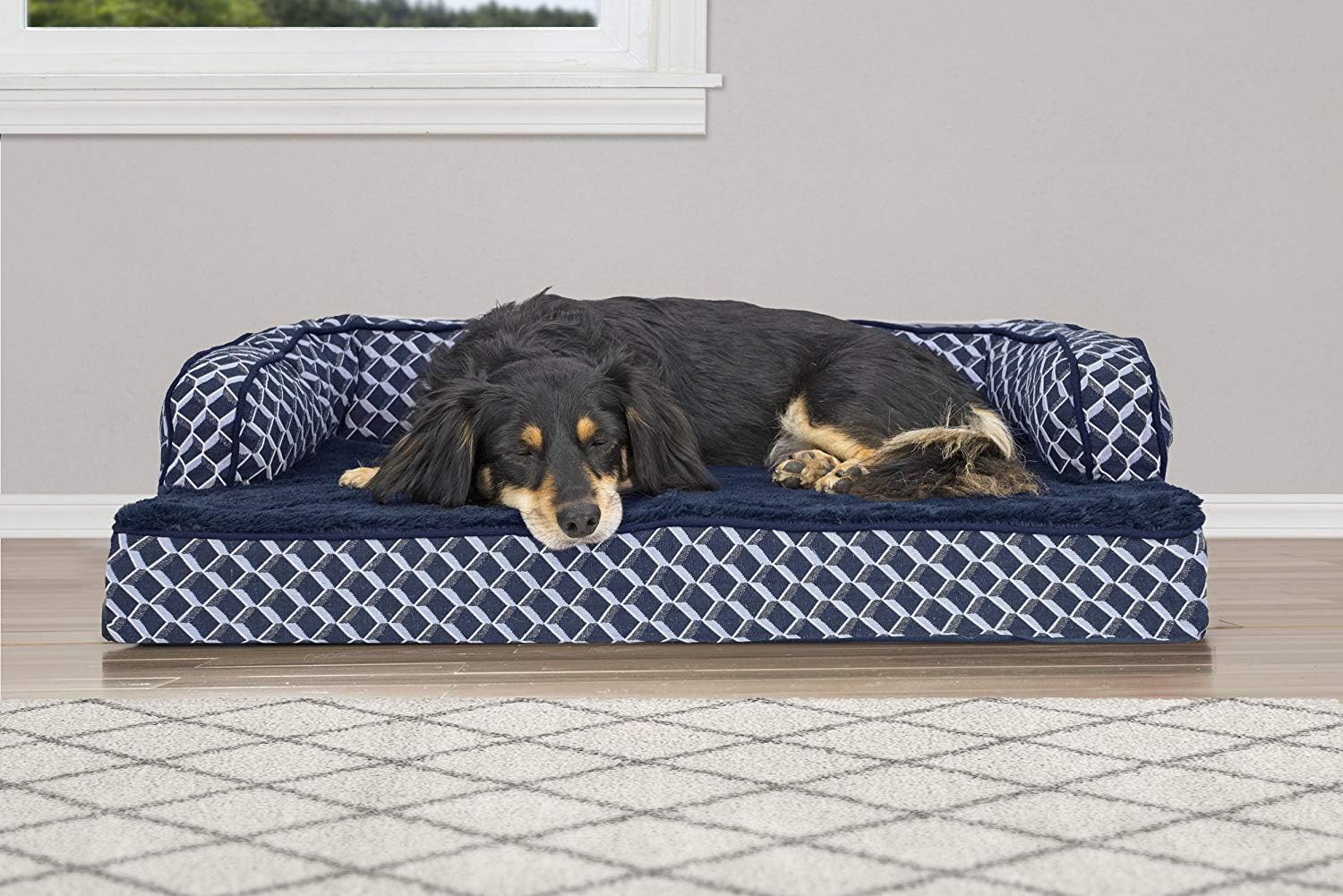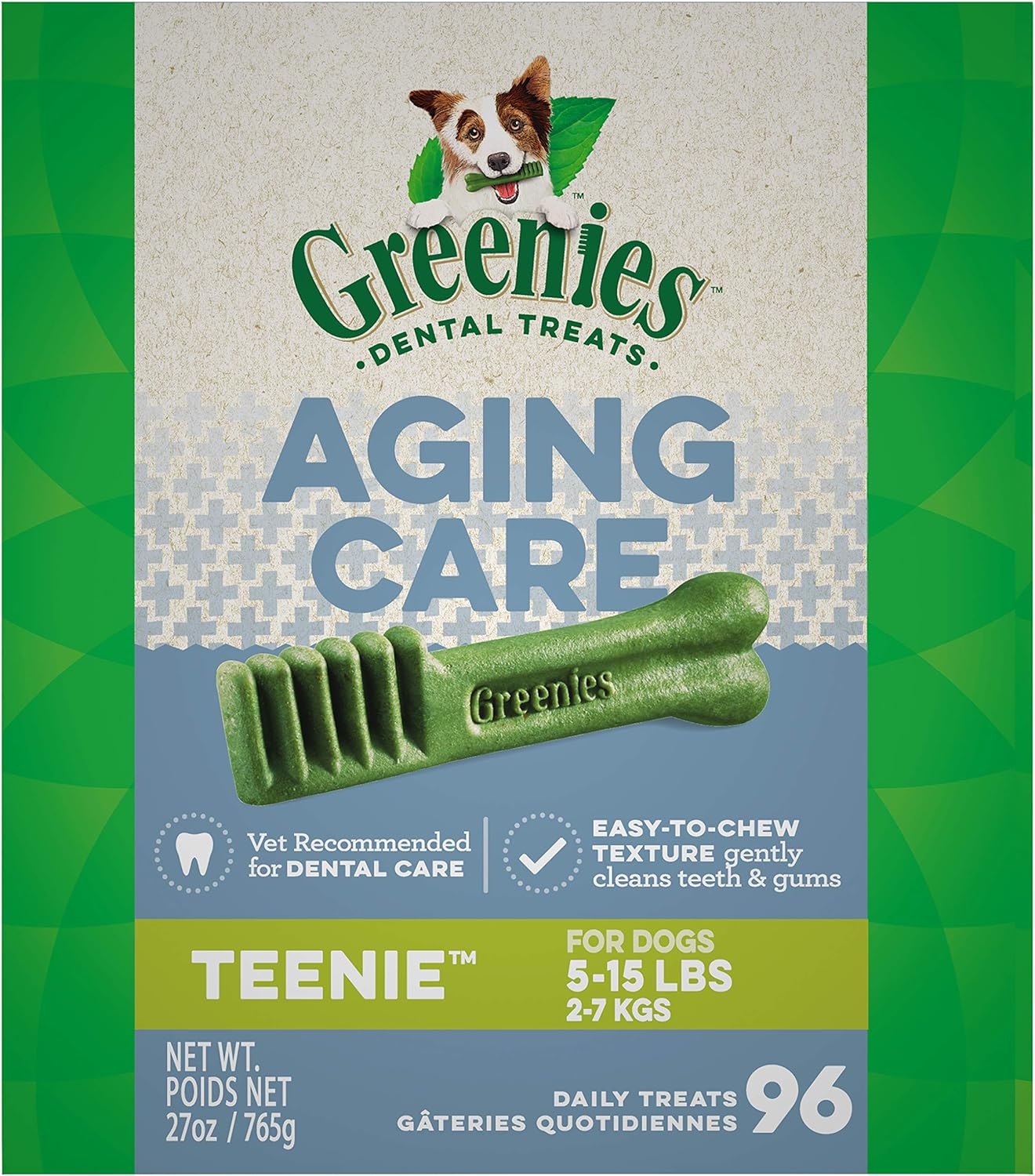 |
Key Points on How to Care for Your Dog in Their Golden Years:
|
| Caring for your senior dog is a heartwarming journey that involves adapting to their evolving needs with patience and love. Key adjustments include a nutrient-rich diet, low-impact exercise, regular vet care, and creating a comfortable environment with orthopedic support and consistent routines. Addressing age-related health issues such as arthritis or cognitive decline and providing emotional reassurance ensures your senior dog remains healthy and happy. These golden years offer an opportunity to deepen your bond and cherish every moment, ensuring your loyal companion ages with grace, dignity, and the love they deserve.
This article explores practical tips and strategies for navigating your senior dog’s golden years, ensuring their well-being, and enhancing your special bond. |
|
Recognizing the Signs of Aging
Depending on their breed, size, and overall health, dogs show signs of aging differently. Common indicators include:
| Sign | Description |
| Slower Movement | Reduced energy, stiffness, or difficulty getting up and down, often signaling joint or muscle issues. |
| Behavioral Changes | Increased irritability, confusion, or restlessness that may indicate cognitive decline or discomfort. |
| Vision and Hearing Loss | Difficulty responding to commands, bumping into objects, or reluctance to go outside at night. |
| Increased Sleep | Senior dogs typically sleep more and need longer rest periods between activities. |
Adjusting Diet and Nutrition
A senior dog’s diet plays a crucial role in maintaining their health. Focus on:
| Nutrient | Benefits | Key Ingredients to Look For |
| High-Quality Protein | Helps maintain muscle mass while reducing the strain on aging organs. | Lean meats like chicken, turkey, or fish |
| Joint Support Nutrients | Supports joint health and reduces inflammation, helping with mobility. | Glucosamine, chondroitin, omega-3 fatty acids |
| Antioxidants | Boosts the immune system and helps with cognitive health. | Blueberries, spinach, carrots |
| Fiber | Supports digestion and helps prevent constipation, a common issue in older dogs. | Sweet potatoes, pumpkin, whole grains |
| Low Calories | Prevents obesity by controlling weight gain, which can exacerbate joint problems. | Foods labeled as “light” or “senior” formulas |
| Essential Fatty Acids | Supports skin and coat health while reducing inflammation. | Fish oil, flaxseed |
Sample Diet for a Senior Dog
| Meal Time | Food Item | Portion Size | Nutritional Benefit |
| Breakfast | Cooked Lean Chicken (skinless) | 1/4 to 1/2 cup | High-quality protein to maintain muscle mass. |
| Cooked Brown Rice | 1/8 to 1/4 cup | Provides fiber for digestion and energy without excess calories. | |
| Steamed Carrots | 1 to 2 tablespoons | Rich in antioxidants and supports vision and immune health. | |
| Fish Oil Supplement | As directed by vet | Omega-3 fatty acids for joint support and coat health. | |
| Mid-Morning Snack | Blueberries | 5 to 10 pieces | Packed with antioxidants to boost cognitive health. |
| Plain Pumpkin Puree | 1 tablespoon | High in fiber to promote healthy digestion. | |
| Lunch | Ground Turkey (cooked, lean) | 1/4 cup | Lean protein for sustained energy and muscle maintenance. |
| Steamed Green Beans | 2 to 3 tablespoons | Low-calorie filler, rich in vitamins and fiber. | |
| Sweet Potato (baked, mashed) | 1 to 2 tablespoons | Provides fiber and supports digestion. | |
| Afternoon Snack | Plain Yogurt (low-fat, no sugar) | 1 to 2 tablespoons | Contains probiotics for gut health and calcium for bone strength. |
| Apple Slices (seedless) | 2 to 3 slices | A source of fiber and vitamins, low in calories. | |
| Dinner | Cooked Salmon (boneless, skinless) | 1/4 cup | Provides essential fatty acids for skin, coat, and joint health. |
| Quinoa | 1 to 2 tablespoons | A grain alternative that is high in protein and easy to digest. | |
| Steamed Broccoli | 1 to 2 tablespoons | Supports overall health with vitamins and antioxidants. | |
| Bedtime Treat | Glucosamine Chew (as recommended) | 1 piece | Helps maintain joint health and reduces stiffness. |
Regular Veterinary Care
Routine vet visits become even more important in your dog’s senior years. Discuss:
- Health Screenings: Regular check-ups can detect early signs of issues like arthritis, kidney disease, or cognitive decline.
- Dental Care: Senior dogs are prone to dental disease. Professional cleanings and at-home care can prevent painful conditions.
- Medications and Supplements: Your vet might suggest supplements for joint health or prescribe medications to manage chronic conditions.
Adjusting Exercise Routines
Exercise is still vital for your senior dog, but it should be adjusted to their capabilities:
| Activity/Exercise | Duration/Frequency | Benefits | Tips for Safety |
| Gentle Walks | 15-20 minutes, 1-2 times daily | Maintains joint flexibility, promotes healthy weight, and provides mental stimulation. | Use a harness for better support and avoid steep inclines. |
| Low-Impact Fetch | 10-15 minutes, 1-2 times weekly | Enhances mobility and maintains muscle strength without overexertion. | Use a soft toy, and limit jumping or sudden movements. |
| Swimming | 20-30 minutes, 1-2 times weekly | Provides full-body exercise with minimal joint strain, excellent for arthritis. | Always supervise and use a dog life jacket if needed. |
| Interactive Puzzle Toys | 10-15 minutes, daily | Boosts cognitive health, reduces boredom, and keeps the mind sharp. | Choose toys with easy-to-access treats for senior dogs. |
| Slow-Paced Tug-of-War | 5-10 minutes, 2-3 times weekly | Strengthens muscles while offering a fun bonding activity. | Be gentle and allow the dog to set the pace and intensity. |
| Nose Work or Scent Games | 15-20 minutes, 2-3 times weekly | Stimulates the mind, encourages problem-solving, and enhances mental well-being. | Use treats or toys hidden in easy-to-find locations. |
| Gentle Stretching Exercises | 5-10 minutes, daily | Improves flexibility, reduces stiffness, and promotes joint health. | Perform stretches slowly and stop if the dog shows discomfort. |
| Massage Therapy | 10-15 minutes, 2-3 times weekly | Relieves muscle tension, improves circulation, and promotes relaxation. | Use gentle pressure and focus on sore or stiff areas. |
Creating a Comfortable Living Environment
Your dog’s comfort becomes a top priority as they age:
- Orthopedic Bedding: Invest in a bed that supports joints and reduces pressure points.
- Ramps and Non-Slip Surfaces: If your dog struggles with stairs or slippery floors, add ramps and rugs to prevent accidents.
- Climate Control: Older dogs may be more sensitive to temperature changes. Keep their living area warm in winter and cool in summer.
Supporting Emotional and Cognitive Health
Just like humans, dogs can face cognitive decline as they grow older:
- Routine and Consistency: Maintaining a stable routine can reduce confusion and anxiety.
- Gentle Socialization: Encourage social interaction with familiar people and pets while respecting your dog’s need for calm.
- Patience and Reassurance: Show extra patience when your dog becomes disoriented or responds slowly. Offering comfort and gentle guidance helps them feel secure.
Accommodating Your Dog Wherever Possible
As your dog ages, it’s crucial to make their environment as comfortable as possible:
- Provide Ramps: Install ramps or stairs to help your dog access furniture, beds, or vehicles without straining joints.
- Orthopedic Bedding: Invest in supportive bedding that cushions aging joints and provides comfort during rest.
- Non-Slip Surfaces: Place rugs or non-slip mats on slippery floors to prevent accidents and support stability.
- Accessible Food and Water: Ensure food and water bowls are at a comfortable height to avoid bending or stretching.
- Climate Control: Keep your home’s temperature stable, avoiding extreme heat or cold that could stress your dog.
- Quiet Space: Create a calm, quiet area where your dog can retreat if it needs rest or feels overwhelmed.
Possible Health Issues in Aging Dogs and How to Manage Them
As dogs age, they become more susceptible to health issues. Here are common problems and how to manage them:
| Health Issue | Symptoms | Treatment Options |
| Arthritis and Joint Pain | Stiffness, limping, difficulty getting up or moving | – Joint supplements (glucosamine, chondroitin)
– Anti-inflammatory medications (consult vet) – Low-impact exercise (e.g., swimming) – Orthopedic bedding for support |
| Cognitive Dysfunction (Dog Dementia) | Confusion, disorientation, restlessness, changes in sleep patterns | – Establish a consistent routine
– Use mental stimulation (puzzle toys) – Medications like selegiline (as prescribed by the vet) – Keep a calm and familiar environment |
| Kidney Disease | Increased thirst, frequent urination, weight loss, vomiting | – Prescription kidney diet
– Increase water intake – Medications to manage symptoms (phosphate binders, blood pressure medications) – Regular vet check-ups for monitoring |
| Dental Disease | Bad breath, difficulty eating, excessive drooling, red or swollen gums | – Regular dental cleanings by a vet
– Daily brushing with dog-safe toothpaste – Dental chews or toys – Pain relief medication for severe cases |
| Heart Disease | Coughing, difficulty breathing, fatigue, swollen abdomen | – Medications like diuretics, ACE inhibitors, or beta-blockers (as prescribed by the vet)
– Low-sodium diet – Weight management – Regular vet monitoring with heart evaluations |
| Vision and Hearing Loss | Bumping into objects, not responding to calls or commands, reluctance to go outside | – Use tactile or scent-based cues for guidance
– Keep furniture and layout consistent – Offer extra patience and reassurance – Use vibration collars if recommended |
| Obesity | Weight gain, difficulty moving, breathing issues | – Switch to a low-calorie diet formulated for senior dogs
– Controlled portion sizes and feeding schedules – Regular, low-impact exercise – Vet-guided weight management plan |
| Incontinence | Urinary accidents, dribbling, or leaking urine – Medications like phenylpropanolamine (prescribed by vet) | – Frequent potty breaks
– Use of dog diapers or belly bands – Waterproof bedding for easy clean-up |
| Cancer | Lumps, sudden weight loss, lethargy, changes in appetite | – Surgical removal (if feasible)
– Chemotherapy or radiation therapy (as recommended) – Pain management and palliative care – Specialized diet for strength and comfort |
Recognizing When It’s Time to Make Tough Decisions
It’s heartbreaking, but part of loving a senior dog is knowing when their quality of life is declining. Discuss with your vet what to look for when determining whether your dog is in pain or suffering.
Top Amazon Finds to Keep Your Senior Dog Happy, Healthy, and Comfortable
Conclusion
Caring for your dog in their golden years is a special journey that requires patience, understanding, and a deep appreciation for the bond you’ve built over time. As your dog ages, their needs will evolve, but your dedication can ensure they continue to live a fulfilling and comfortable life. By focusing on a balanced diet, tailored exercise, and regular veterinary care and creating a nurturing environment, you can help your senior dog easily navigate this phase. Small adjustments, like providing joint support, adapting routines, and offering extra comfort, can significantly affect their well-being.
Remember that the golden years allow you to cherish every moment with your loyal companion. While their energy and pace may decrease, their capacity for love remains as strong as ever. By being attentive to their needs and celebrating their quirks, you can make these years some of the best ones yet. Providing love, comfort, and gentle care is the ultimate way to repay the devotion they’ve shown throughout their life, ensuring they age with the grace and dignity they deserve.



